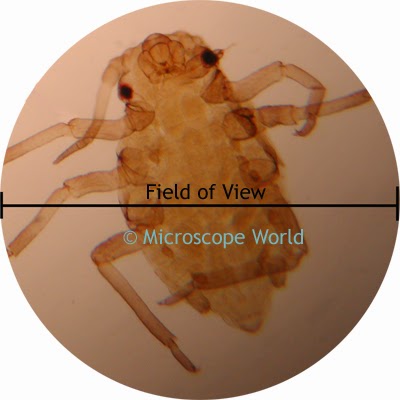Calculating field of view is a simple mathematical formula. You will need to know the field number of the eyepieces being used, the objective value, and any auxilary objective values.
 |
| Notice the field number written on the eyepieces says 18mm. |
Field Size = Field Number ÷ Objective Lens ÷ Auxiliary Lens
If you are using a stereo microscope with a 0.5x auxiliary lens on it, you would first need to look at the eyepiece to see what the Field Number (FN) is. If you were using 10x eyepieces and the field number was 20, and you wanted to find the field of view at 30x magnification, do you know what the math equation would look like?
When using 10x eyepieces, and a 0.5x objective, in order to have 30x magnification, the magnification knob would need to be set at 6x. The field of view formula is below:
Field Size = 20 (FN) ÷ 6 ÷ 0.5
Field Size = 6.67mm
At 30x magnification the entire field of view in the microscope setup mentioned above is 6.67mm.
